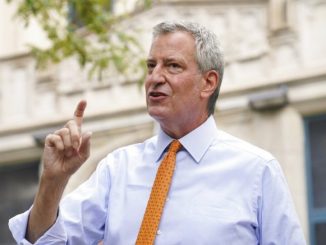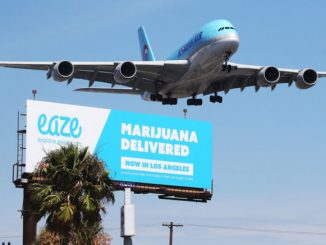

U.S. consumer prices have soared above economists’ predictions and by the most in over a decade, as fiscal stimulus and booming demand pushed against supply constraints, potentially fueling market fears of a prolonged bout of higher inflation.
The year-over-year consumer price index (CPI) jumped by 4.2 percent in April after rising 2.6 percent in March, the Labor Department said in a release on Wednesday (pdf). This is the largest 12-month increase since September 2008, when the index rose by 4.9 percent.
Forecasts from economists polled by DailyFX, a financial market insights platform, expected the year-over-year inflation measure to come in at 3.6 percent, compared to the actual 13-year high.
On a monthly basis, the CPI inflation measure jumped 0.8 percent in April after rising 0.6 percent in March, while the so-called core CPI, which excludes the volatile food and energy components, soared by 0.9 percent. The surge in the core CPI is the largest monthly increase since April 1982.
Economists polled by DailyFX had forecast the CPI index to climb by 0.2 percent and the core CPI to rise 0.3 percent in April, month-over-month.
Sen. Rick Scott (R-Fla.) commented on rising prices, telling reporters ahead of the Labor Department release that “the Biden agenda is higher taxes, higher inflation, and it’s going to be horrible for Americans all across this country.”
“Americans are worried taxes are going up and they’re scared to death of what’s happening with inflation,” he added.
A major contributor to the month-over-month inflation measure was the price index for used cars and trucks, which surged by a record 10 percent in April, the largest increase in the history of the series, which began in 1953. Used car and truck prices surged 21 percent year-over-year.
A 25.1 percent spike in energy costs drove much of the year-over-year increase, with gasoline prices surging 49.6 percent and energy commodities rising by 47.9 percent over the 12-month period ending in April.
Nearly all major component indexes of the inflation measure rose in April, with transportation services rising 2.9 percent, piped gas rising 2.5 percent, and commodities less food and energy going up two percent on a month-over-month basis. Other notable contributors to rising prices were costs of shelter, airline fares, recreation, and household furnishings and operations.
The above-expectations rise in inflation is likely to stoke fears of an interest rate hike by the Fed, although Federal Reserve officials have played down the concerns by predicting that price rises would be “transitory.”
Fed officials have also repeatedly said they will not raise rates or reduce the monthly bond buying program until inflation averages around two percent for a longer period of time.
Federal Reserve Vice Chairman Richard Clarida played down the significance of rising inflation in prepared remarks for a speech he is scheduled to deliver to the National Association for Business Economics on Wednesday (pdf).
“Readings on inflation on a year-over-year basis have recently increased and are likely to rise somewhat further before moderating later this year,” he said in the text, adding, “I expect inflation to return to—or perhaps run somewhat above—our 2 percent longer-run goal in 2022 and 2023.”
U.S. stocks opened lower Wednesday, while the U.S. dollar index rose.






Be the first to comment